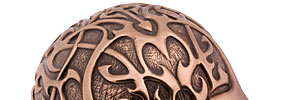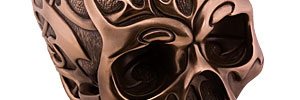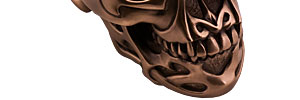Skull symbolism is instinctive in human nature. We recognize the fragments of a cranium in the earth, even when other bones look like shards of stone. The human mind is primed to recognize faces, and so eager to find them that it can see faces in a few dots and lines or punctuation marks; the face that looks back from a human skull cannot avoid recognition as having once been human. A human skull, with its eyes much larger than in life, displays a degree of neoteny, which humans often find visually appealing. Yet, a skull is obviously dead. As such, human skulls have a visual appeal beyond the other bones of the human skeleton, and are fascinating even as they repel.
The Neanderthals painted the skulls of their respectfully buried dead with red ochre coloring; a transfusion to carry its late inhabitant into the Next World. Where there is metaphor, there is humanity. The skull has no flesh or tongue, yet it speaks. Do not rashly assume that the emblem of a skull is a mere symbol of Death.
The visual cues of life are contrasted with eternity in this tribal, still and utterly silent figurine.
Cold Cast is a modern method of casting sculptures using a mixture of resin and powdered polymer materials. The finished sculpture has a surface which looks very similar to traditionally cast material, but tends to be much lighter.
















